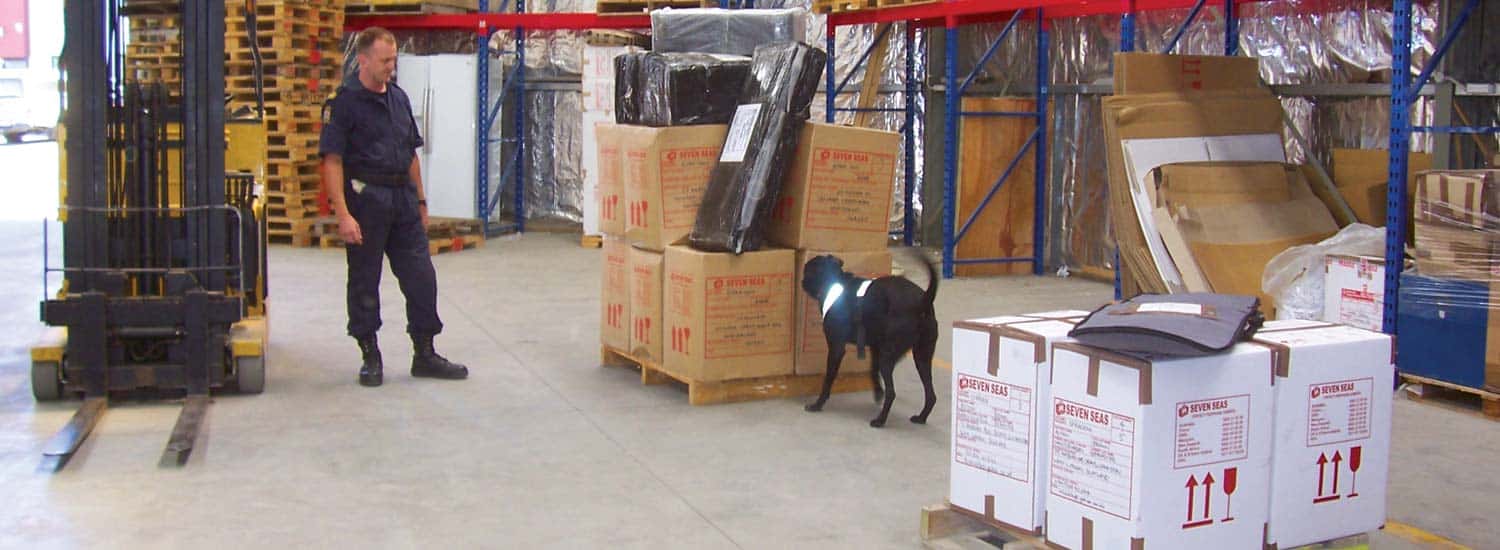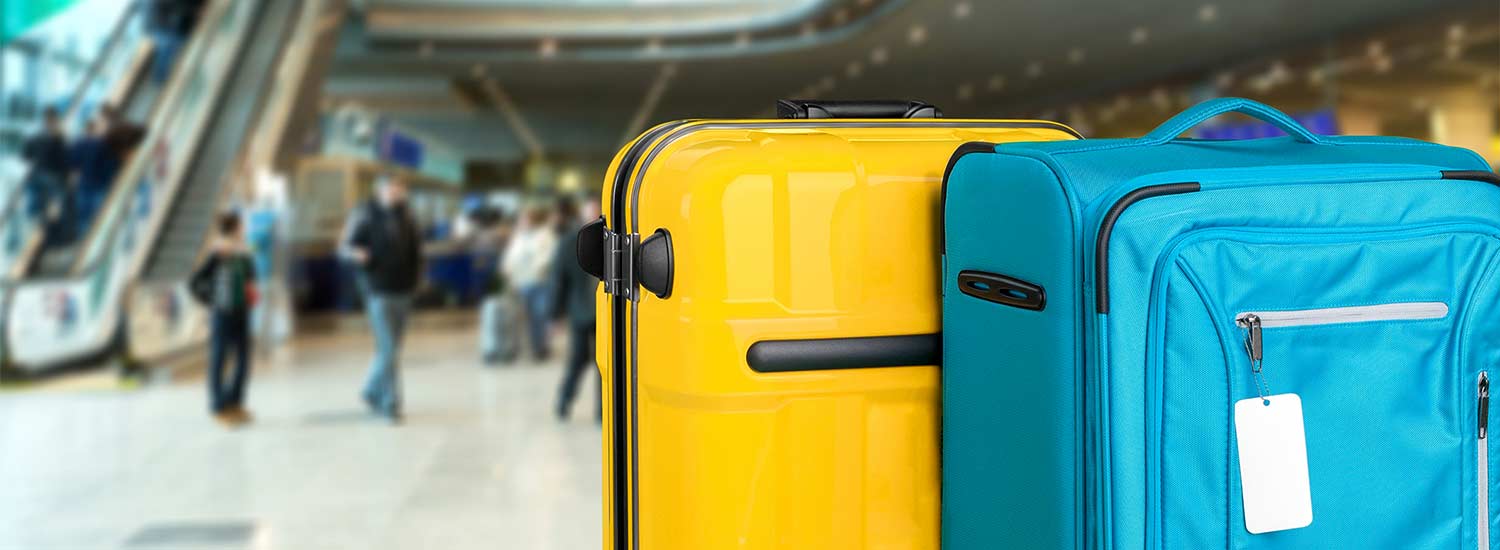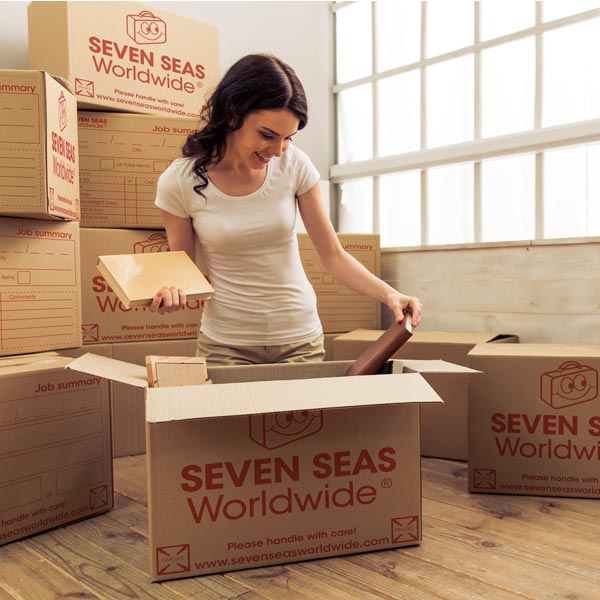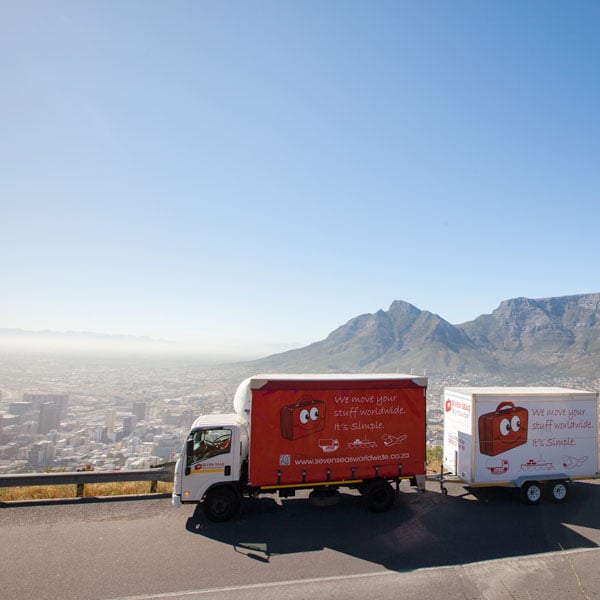Before packing, check this list of items prohibited from entering a particular country or region.
Suitcase shipping: everything you need to know
Avoid the stress and strain of lugging excess suitcases to and from the airport. Whether travelling overseas or studying in a new city, shipping suitcases and bags as excess baggage is a convenient and affordable alternative. From choosing the best shipping method to ensuring your belongings arrive safely, there are several factors you need to consider.
In this guide, we'll explore all the ins and outs of shipping a suitcase, including cost, packing tips, measuring your suitcase, prohibited goods and more.
Quick links
How to pack a suitcase | Best way to ship a suitcase | Luggage shipping costs

Space-saving suitcase packing tips
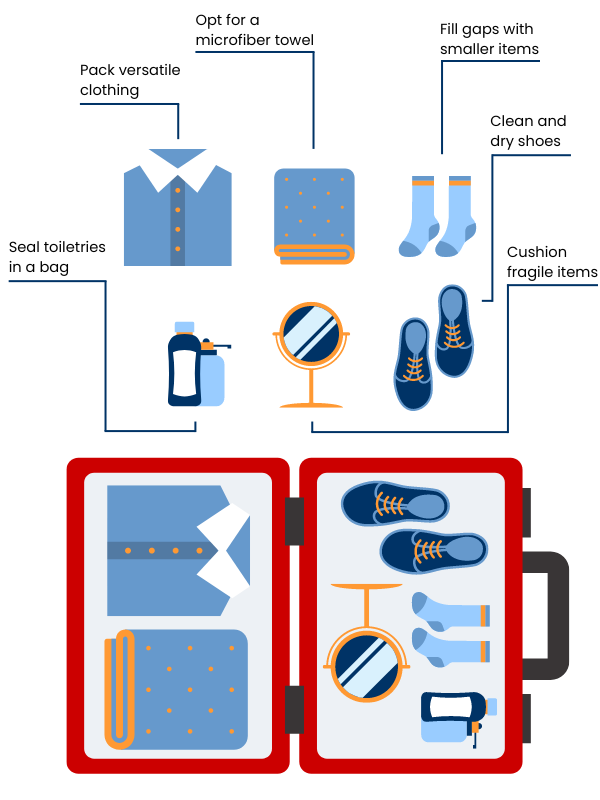
How to pack a suitcase
To pack a suitcase efficiently, start by laying out the items you plan to ship, remembering to declutter first to save money and time.
Place heavier goods like shoes, hairdryers and toiletry bags at the bottom of your suitcase to create a stable base. Use all available zip compartments to store handy items such as umbrellas, rain jackets, sunglasses and paperwork.
Consider using packing cubes* or small bags to organise similar items and reduce wrinkles; for example, placing t-shirts and dress shirts in one cube and trousers and shorts in another. Otherwise, use tissue paper or plastic bags between layers to prevent items from rubbing against each other during the journey.
How to save space when packing a suitcase
To save space while packing a suitcase, choose versatile clothing that matches multiple outfits, such as black shorts and white t-shirts. Consider wearing bulky items like heavy boots or winter jackets while travelling instead of packing them.
Use vacuum storage bags* to reduce the volume of your clothing. Simply fold your items neatly inside the bag, compress the air with a vacuum cleaner, and seal it shut. Just like magic, you'll create at least 50% more space! But, be careful the extra weight created does not exceed our 30kg/66lbs limit per container.
Further maximise space by filling gaps with smaller items like gloves and ties and placing rolled-up socks inside shoes. And ensure toiletries are in a sealed bag to prevent spills. If shipping fragile items, cushion them with clothing or bubble wrap and pack them in the middle of the suitcase surrounded by soft fabrics.
Lastly, consider opting for a microfiber towel, which is more lightweight, compact and absorbent than a cotton towel.
*Seven Seas Worldwide doesn't endorse these products.
Prohibited goods: what to avoid packing in your suitcase
When shipping suitcases overseas, it's crucial to be aware of prohibited items to avoid delays, fines or confiscations. Each country has various import restrictions to protect its population and environment. Please reference our Prohibited Goods page for the most up-to-date information.
Although much faster, if travelling the same distance, air shipping uses ten times more CO2 than road shipping and around sixty times more than sea shipping.
Best way to ship a suitcase
The best way to ship a suitcase depends on individual considerations, such as your budget, how soon you need it, and where you're going.
First, choose a reputable international moving company that offers luggage shipping. Look for stand-out features such as door-to-door delivery, tracking, insurance, multilingual customer communications and customs assistance.
When buying a suitcase, pick one made of sturdy materials, such as reinforced plastic, aluminium or polycarbonate. Avoid cheap, thin or lightweight suitcases, which will likely incur damage during long shipping journeys.
Next, ensure your suitcase is within your shipping company's weight and dimensions limits. Pack it with clean, secure, organised items. Keep all handles unextended and zips secured, held in place with string or cable ties.
Then, determine how soon you'll need your belongings. Air shipping arrives quickest, while sea shipping is cheaper but takes a little longer, so be sure to book well in advance.
Consider also the environmental impact. Although much faster, if travelling the same distance, air shipping uses ten times more CO2 than road shipping and around sixty times more than sea shipping.
![]()
How to measure a suitcase
Although not a professional packing service, our experienced depot staff will box your suitcases for added protection during transit.
To help us choose an appropriately sized, double-walled cardboard box to fit your luggage, please supply accurate suitcase measurements using the following three-step method:
- Stand your suitcase upright, facing forward.
- Measure its width, height and depth, including anything that sticks out, like wheels, stands and handles. The maximum suitcase size we accept is 89cm in height, 59cm in length and 49cm in width.
- Double-check your measurements to ensure total accuracy.
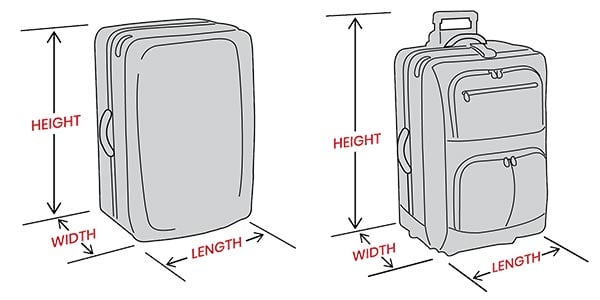
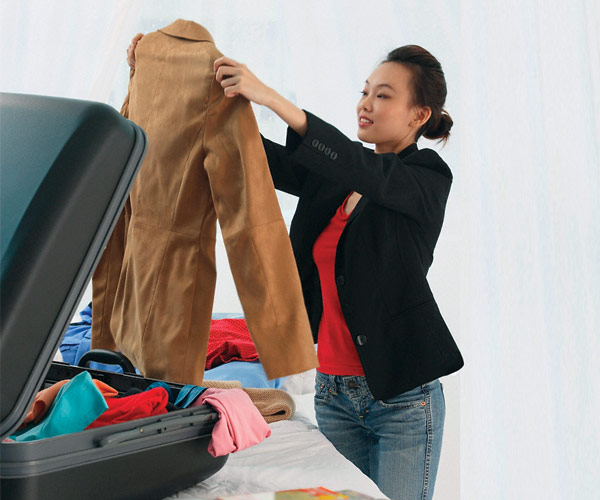
How much does it cost to ship a suitcase?
The cost of shipping a suitcase depends on a few factors, such as your shipment's size, your budget, and the location of your origin and destination addresses.
Another consideration is how soon you need it. Shipping by air is the quickest option, while sea and road shipping is slower but uses less CO2, benefitting our delicate planet.
For a stress-free and affordable suitcase shipping experience, choose Seven Seas Worldwide to send your excess luggage overseas. Plus, we provide top-quality cardboard containers to protect your belongings, collect and deliver shipments door-to-door and offer access to an online tracker for extra peace of mind.

Luggage shipping costs
This table shows how much it roughly costs to send one average-sized suitcase (height 67cm, width 45cm, depth 25cm) from London, UK, to the capital cities for some of our most popular shipping destinations by sea and air*.
|
Ship by air |
Ship by sea | |
| Australia | £363.50 | £157.86 |
| The USA | £273.38 | £284.40 |
| New Zealand | £332.73 | £161.86 |
| Hong Kong | £247.45 | £132.83 |
| Thailand | £302.28 | £211.70 |
| China | £347.28 | £131.86 |
*prices as of March 2024 (not including destination charges)
